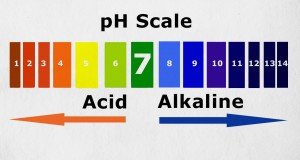FDA approving cancer drugs without proof that they cure patients or help them live longer
(NaturalHealth365) Cancer drugs can cost patients a staggering $171,000 a year, according to the Center for Health Policy and Outcomes at New York’s Memorial Sloan Kettering Cancer Center. But in many cases these cripplingly expensive drugs offer only marginal benefits – with no proof that they improve either survival rates or quality of life.
Now, health advocates – joined by many respected oncologists – are decrying the rush to approve drugs that break patients financially, while doing little or nothing to relieve their suffering. As you continue to read about this (below) – the reality surrounding these cancer drugs will become quite disturbing.
Scam ALERT: Price is unrelated to the performance of these cancer drugs
According to Kaiser Health News, a push by patient advocates for earlier access to cancer medications has led to the U.S. Food and Drug Administration (FDA) approving a new roster of oncology drugs. And few have fulfilled their hoped-for goal – that of allowing patients with limited life expectations to survive for years.
In fact, experts say that overall cancer survival rates have barely changed in the last decade – in spite of all the cancer treatments billed as “cutting-edge” and “state of the art.”
Not only are the vast majority of oncology drugs ineffective – but in many cases, the price of the medication has absolutely no relationship to how well the drug works. For instance, one of the most expensive cancer drugs on the market has one of the worst records when it comes to improving the lives of cancer patients.
Fran Visco, president of the National Breast Cancer Coalition, has blunt words regarding the FDA’s rush to approval. “We are very concerned about the push to get more drugs improved, instead of effective drugs approved,” Visco emphasizes.
Expert opinion: Most cancer drugs don’t work – despite their soaring costs
Dr. Vinay Prasad, assistant professor of medicine at the Oregon Health and Science University, has long been an outspoken critic of the effectiveness of cancer treatments.
Although cancer drugs do help some patients for a limited amount of time, most patients get little or no benefit from the newer drugs. (The last important cancer drug, Herceptin – acknowledged by many oncologists as a “game-changer” – received approval almost 20 years ago). In fact, Dr. Prasad notes that two thirds of the cancer drugs approved within the past two years present no evidence that they extend survival at all, causing some scientists and researchers to liken cancer treatment to a “lottery.”
And research bears out Dr. Prasad’s assertion. According to a study published in JAMA Otolaryngology – Head and Neck Surgery, 72 different new cancer therapies approved between 2002 and 2014 granted patients an average of a scant 2.1 more months of life – a decidedly disappointing statistic.
JAMA study of 18 approved cancer drugs offered shocking results
The most damning evidence of the ineffectiveness of cancer drugs was a study published in JAMA Internal Medicine, in which researcher Diana Zuckerman examined 18 different cancer drugs approved between 2008 and 2012.
After analyzing peer-reviewed findings and FDA review summaries – and calculating the drugs’ annual cost – Zuckerman found that none of the 18 offered a clear benefit, such as tumor shrinkage or progression-free survival. And only one medication – crizotinib, for non-small-cell lung cancer – had data demonstrating that it improved patients’ lives in any way (for example, by reducing pain or fatigue).
In addition, two drugs –peginterferon and cabozantinib – actually did more harm than good. Cabozantinib, the most expensive drug on the market for thyroid cancer, caused patients to score worse on a 5-point scale measuring diarrhea, fatigue, sleep disturbance, distress and memory problems.
And Prasad and Zuckerman are not the only experts to speak out, by far. Dr. Richard Schilsky, senior vice president and CMO at the American Society of Clinical Oncology, says that he questions the value of a therapy when the benefit is small, the toxicity similar to that of previous drugs, and the cost higher.
Cancer trials actually appear to be a pharmaceutical “sleight of hand” trick
Another disturbing aspect of cancer treatment is that people in cancer trials are disproportionately young, giving rise to misleading results. For example, 30 percent of cancer patients are older than 75. Yet, only 33 percent of participants in cancer trials are older than 65, and just 10 percent are over 75 – a clear disparity.
So, a drug that improves survival in liver cancer by three months affords no survival advantage among Medicare patients not involved in the clinical trial. In other words: patients who are older and sicker than those who participate in research studies “give the lie” to the rosy, unrealistic picture often painted by big pharma.
Yet another way to put it: when it comes to success rates of clinical cancer trials, it’s sometimes a case of: “Now you see it, now you don’t.”
Even modest expectations go unmet
The American Society of Clinical Oncology has set goals for newly-approved cancer drugs: extending life or controlling tumors for at least 2.5 months. But, in a study published in JAMA Oncology, four out of five cancer drugs failed to meet these modest standards.
The reason for the minimal standards? The rarity of truly effective cancer treatments.
(That said, there are some successes to point to. For example, the number of patients with advanced melanoma who survive five years after diagnosis has jumped from 5 percent to 40 percent since the development of immune therapies – which stimulate the patient’s natural defenses to fight cancer cells).
But breakthroughs and successes can still be agonizingly rare. “It’s not very often that we come across a transformative treatment,” acknowledges study leader Dr. Sham Mailankody, a myeloma specialist at Memorial Sloan Kettering.
For too many cancer patients today, the latest batch of mainstream cancer treatments involves minimal improvement, serious toxicities, maximal expense – and dashed hopes. These individuals deserve better.
Sources for this article include:











